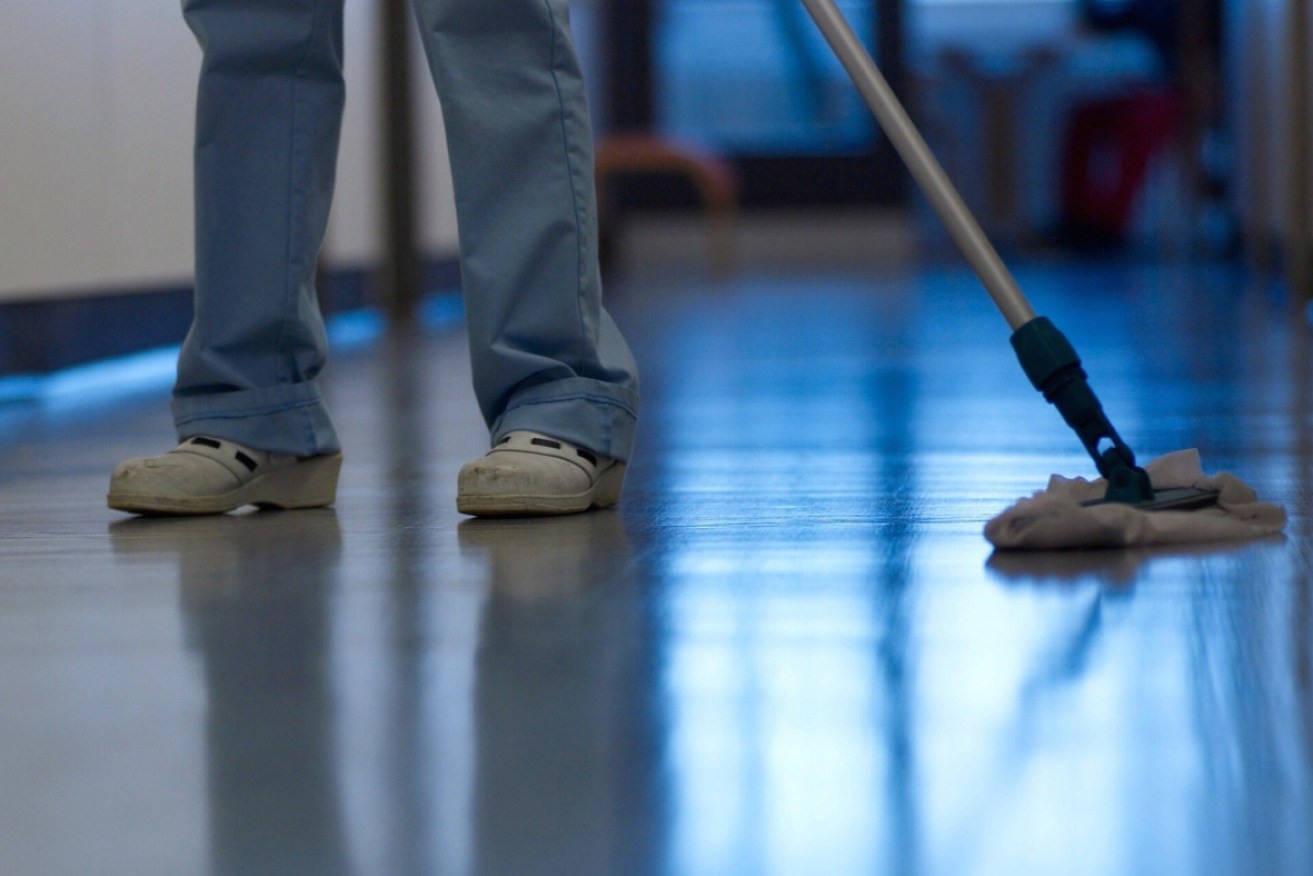Let’s not make the army of ‘working poor’ bigger


Unions claim Australian workers are in danger of slipping further down the ladder of opportunity. Photo: Getty
The nation’s peak employer body has called for the minimum wage to grow slower than inflation. That really would boost the ranks of the working poor.
The Australian Chamber of Commerce (ACCI) and Industry slammed the ACTU this week after the union body called for a $45 a week increase to the minimum wage – a 6.7 per cent rise.
ACCI argues that raising the minimum wage by less than inflation would allow employers to reinvest the difference to take on more staff. It’s calling for a 1.2 per cent increase, almost half the inflation rate of 2.1 per cent.
It is conventional ‘supply-side’ economic thinking – the kind made popular in the US by the Reagan administration in the early 1980s, but increasingly questioned since the global financial crisis struck in 2008.
What that crisis revealed was that the growth created by Reagan-style ‘trickle-down economics’ was accompanied by growing inequality.
The worst aspects of that inequality were masked before the GFC by high levels of private debt, but when that illusion came crashing down, an underclass of ‘working poor’ became impossible to ignore.
Supply-side economics too often treated human beings as a ‘factor input’ for businesses revelling in the era of globalisation.
The dignity factor
When economists think about factor inputs, they typically divide them into four types: land (which includes natural resources), labour, capital, and the entrepreneurs that tie them all together.
So a small business entrepreneur might rent premises (land) to open a cafe, employ labour to make coffee, borrow money to buy a coffee machine (capital) and then pay themselves a salary.
The ‘factor rewards’ that flow back to those four areas are in constant flux, but in Australia the cost of capital (in the form of debt) is low, and the minimum wage small compared to the enormous ‘rents’ commanded by ‘land’.
What’s an entrepreneur to do?
In this environment, if profits grow at the inflation rate, but the minimum wage grows less, what will happen to the cost savings?
The entrepreneur could take on more staff, expand the business and boost the local economy … or they could use the extra profits to give themselves a pay rise.
Regardless of which you think would be most likely under a sub-inflation minimum wage, there is a third big-picture problem to consider.
Workers in the US, where the minimum wage is just $US7.25 ($A9.70), are often forced to hold down two or three jobs just to keep a roof over their heads and buy basic food and essentials.
Members of that ‘working poor’ have worse health and educational outcomes, engage more in criminal activity and create more demand for social housing and other government services. The cost to the economy is large.
Australia was one of the first nations to get to grips with that problem, back in 1907 via the Harvester judgment in Melbourne.
That ruling was based on the principle that wages should reflect “the normal needs of the average employee regarded as a human being living in a civilised community”.
More than a century later, the Fair Work Commission has a similar mandate: to ensure that pay rates correspond to “relative living standards and the needs of the low paid”.
For more than a century, then, ‘fair’ wages in Australia have been seen as relative to the cost of living – not to how ‘high’ they are compared to other nations where the cost of living can be quite different.
That has prevented a large ‘working poor’ being created here.
Definitions of ‘working poor’ vary, but EU policy makers consider it to mean: “… individuals which during the previous year were ‘mainly’ at work (at least six months) and are living in a poor household with an income below the ‘at-risk-of’ poverty threshold – 60 per cent of median equivalised income.”
The important point of that definition is that it is based on a household – if two partners had low-ish wages, they might do okay.
But in Australia, if you live alone and work for the minimum wage of $35,000 a year you’d be in trouble – the minimum wage in Australia is 47 per cent of the median full-time wage.
Given that many people live alone, or as single parents, it’s clear that the ACTU is right about the risk of them living as ‘working poor’ – some catch-up with the rest of the nation looks justified.
Nonetheless, the Fair Work Commission may, in the current difficult times, decide to hold that ’47 per cent’ level steady by recommending a pay rise in line with inflation.
But it’s hard to see how it could justify sending Australia’s lowest-paid workers backwards – and taking us a step closer to a US-style army of working poor.








